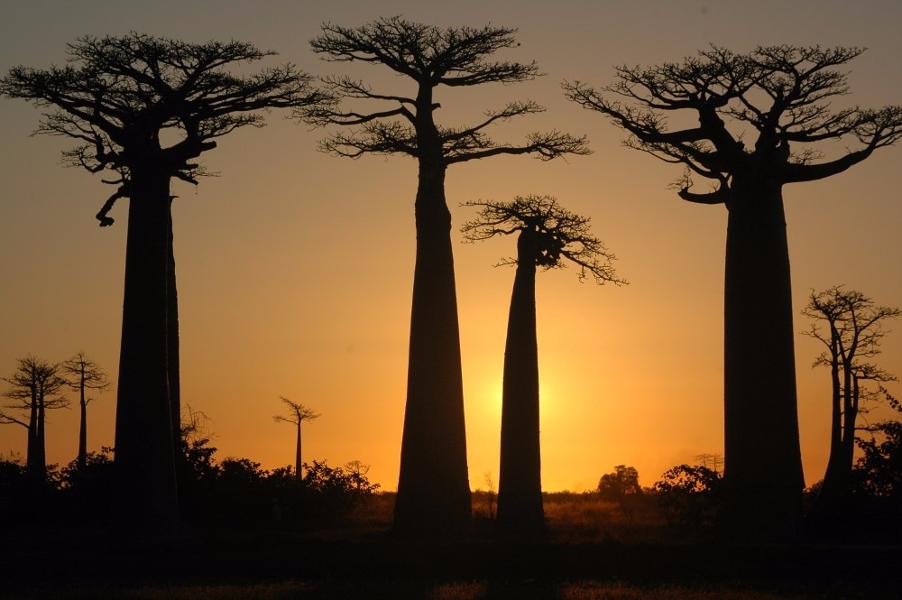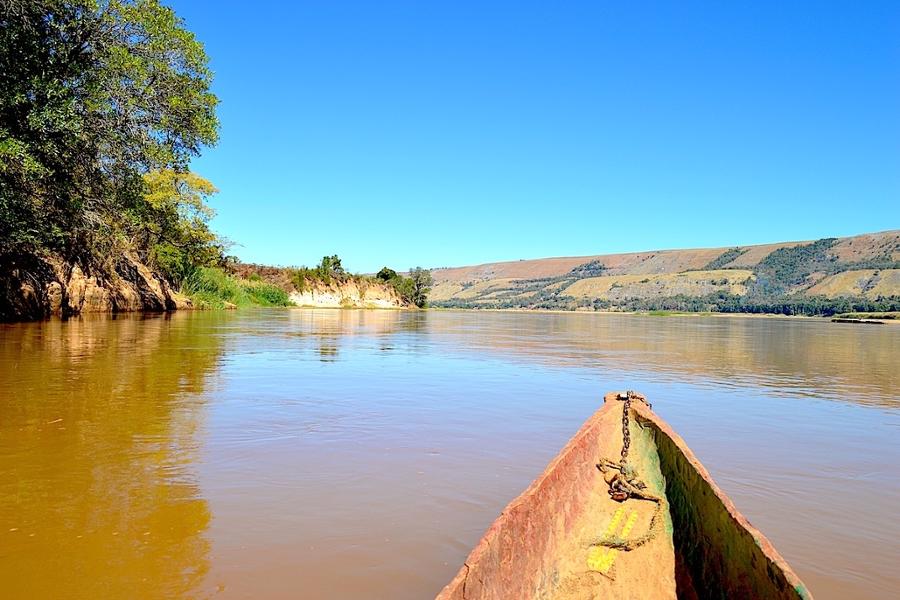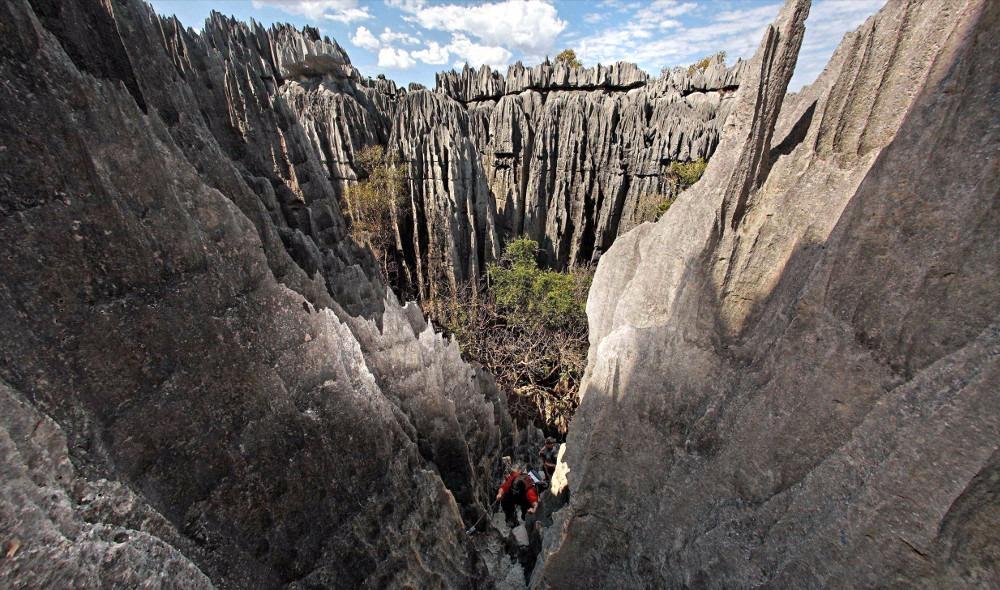
Journey to the Tsingy de Bemaraha, as told by Olive
The "Tsingy de Bemaraha" is both the land where the island's first inhabitants arrived and a site of geological formations shaped over millennia. Over time, they have formed an immovable forest of limestone pinnacles, so vast and astonishing that it makes one feel insignificant. Come with me; I'll take you there.
June marks the end of the rainy season in Madagascar. This is the long-awaited time for us to set off, hearts filled with hope. We are determined to visit the Tsingy de Bemaraha, starting from Antananarivo and passing through Morondava.
From Morondava, we depart very early in the morning. An eight-hour journey in a 4x4 takes us to Bekopaka, an unsuspected village in the middle of nowhere, guarding the "Tsingy," these vast marine limestone deposits dating back 200 million years.
The jolts of red dirt roads accompany us along the Avenue of the Baobabs, still shrouded in thick morning fog. Their roots-in-the-air silhouettes gradually emerge, further piquing our curiosity about these giant trees. We will see them more clearly on our return journey, when we traverse the avenue to photograph and immortalize the magnificent sunset that casts an orange glow on the baobabs.

Crossing the arid landscapes of the Menabe region, a mix of dirt, gray sand, and crushed white gravel beneath the vehicles, we encounter men searching for pasture for their zebus or goats. Most pause to watch us pass, their eyes fixed on us until we disappear from view.
By mid-morning, we reach Tsimafana, the first village in the central-western Menabe region. Here, we catch glimpses of a few *falafa* houses, traditional constructions made from locally available tree materials, including leaves.
Surprisingly, such a small area is bustling with activity: large trucks carrying goods park along the road, and men, seemingly unbothered by the intense heat, walk barefoot on the burning sand, unloading sacks of rice and other merchandise. These goods await transport by public ferries to Belo-sur-Tsiribihina or even Bekopaka.

For us, this is the point of embarkation to take the first ferry, capable of carrying up to four vehicles with their passengers. Onboard, we feel proud of having made it this far, discovering the opulent surroundings of the Tsiribihina River. In the distance, we spot submerged rice paddies, their stalks barely visible above the water's surface.
The journey is punctuated by flocks of impressive birds.
We reach Belo-sur-Tsiribihina, stopping for a delicious lunch at the renowned Mad Zebu restaurant. It’s incredible to find such fine dining in such a remote place! They offer zebu meat in all forms: fillet, tartare, escalope. After all, zebus are abundant in this region.
Leaving Belo-sur-Tsiribihina, we gradually lose sight of the sturdy buildings that remind us of civilization. The arid western landscape quickly catches up with us.
To reach Bekopaka, we take a second ferry across the Manambolo River. The breathtaking scenery could hold us here longer, as if freezing time. Towering cliffs surround us, making this journey feel surreal. The grand landscapes and the unique sensation of traversing such vastness alone make the trip worthwhile.
A night at an eco-lodge, and we finally arrive at the Tsingy de Bemaraha…

We begin our exploration of this mysterious place. The first challenge is navigating the trails in search of lemurs that inhabit this astonishing geological marvel, squeezing between the roots of the Tsingy before gradually climbing to the peaks. Once there, we are rewarded with breathtaking views, where everything seems to captivate us.
In some areas of the Tsingy, pachypodium plants and baobabs grow, occasionally reaching the height of the limestone peaks.
In Malagasy, mi-tsingy means "to walk on tiptoe," signifying "to tread carefully." Indeed, we managed to access this cradle of Madagascar’s prehistoric inhabitants, but moving through the caves was challenging, with our flashlights serving as essential allies to guide us through the canyons. However, the sublime scenery of this stone chapel more than compensates for our efforts.
The Tsingy challenge us for about four hours, filled with emotion and fascination. Like children following in their parents’ footsteps, we trail behind our guide, often rushing to catch up as we spend most of the time taking photos. We reach the summit after crossing a suspension bridge over 50 meters high.
Olive Ramarozatovo
